Disclaimer For educational purposes only. Do not use as medical advice
<strong>About</strong><strong>Plants</strong><strong>Chinese Medicine</strong><strong>Caution</strong>
| Health Benefits |
| For: Constipation • Diabetes • Menopause • Dysmenorrhea • Hot flashes • Conjunctivitis • Damp heat jaundice • Heat • Acute pancreatitis • Enteritis • High cholesterol • Tonsillitis • Hepatitis |
| Attributes: Anti-inflammatory • Antibiotic • Antipyretic • Choleretic • Cholagogic • Hemostatic • Immunity booster • Laxative • Nephroprotective |
| Research (sample) |
| Articles:
|
Constituents:
Tannins • Phytoestrogen • Pyrogallol • Catechu • Gallic acid • Anthraquinone • Chrysophanol • Aloe-emodin • Chrysophanol |
| Photos (Click to enlarge) |
|
|
| Fun Facts |
Other Names: Jiu Zhi Da Huang • Da Huang Tan
Plant Family: Polygonaceae |
| The stalks are nutritious, high in vitamin K, and low in calories. It's often used as a digestive aid and to relief constipation. Rhubarb helps improve the blood sugar levels in people and can reduce hot flashes in perimenopausal women. The leaves are toxic to humans because it contains high amounts of oxalic acid. The roots are used in Chinese medicine. |
| Species |
| Rheum officinale or Rheum palmatum, are the species that the Chinese herb, Da Huang, is harvested from.
Rheum rhabarbarum is the garden rhubarb and is often what is used in pies in the US.
Rhapontic rhubarb, Rheum rhaponticum (L)Sikkim rhubarb Rheum nobile |
| Rheum palmatum is NOT in the USDA Plant Database. |
|
USA: Rheum palmatum is not found in the wiild. USDA Zones: 6-9
Native: China, Tibet
Habitats: Forests, hills, 1200M <elevation<4000M
|
| Properties, Actions, Indications, etc. Category: Downward Draining |
| English: Rhubarb Pinyin: Da Huang Pharmaceutical: Radix Et Rhizoma Rhei |
| Organs: Heart • Liver • Large intestine • Stomach • Spleen Temperature: Cold |
| Taste: Bitter Toxicity: Overdose can lead to dizziness, jaundice, nausea and vomiting |
| Patterns: Blood stasis • Damp heat jaundice • Abdominal masses • Food accumulation • Blood heat |
| Actions: Drain downward • Promote menstruation • Reduce accumulation • Drain fire • Cools blood • Clear heat • Dry dampness • Resolve blood stasis |
| Indications: Constipation • Food accumulation • Tenesmus • Low or no menstruation • Heat • Conjunctivitis • Swollen gums • Fever • Incoherent speech |
| Contraindications: Pregnancy • Nursing • Menstruation • Qi deficiency • Blood deficiency • Stomach deficiency cold • Spleen deficiency cold • Normal or loose stool • Normal blood flow • Postpartum |
| Typical Dosage: 3g to 15g Guidelines |
| Parts Used: Root • Stalk Substitutes: |
| Other: (add near end of decoction) |
| Combine With |
Purpose |
| Tao Ren + Hong Hua + Dang Gui + Chuan Xiong |
Resolve moderate blood stagnation [18] |
| Shui Zhi + Meng Chong |
Resolve acute blood stagnation[18] |
| Ren Shen + E Jiao |
Resolve chronic blood stagnation [3],[18] |
| Meng Chong + Di Bie Chong |
Amenorrhea [3],[18] |
| Long Dan Cao + Zhi Zi + Xia Ku Cao |
Drain liver fire: Headaches, sore throat, oral ulcers, red eyes, gum inflammation, constipation [18] |
| Huang Lian + Huang Qin |
Drain heart fire, vomiting blood, nosebleeds [3],[5],[17],18] |
| Dang Gui |
Blood stasis [3],[5] |
| Shui Zhi + Meng Chong |
Blood stasis (acute) [3] |
| Fen Fang Ji + Ting Li Zi |
Edema, water retention [18] |
| Mu Xiang + Bing Lang + Hou Po + Lai Fu Zi |
Food accumulation, constipation, vomiting [17] |
| Huo Ma Ren + Xing Ren |
Moderate constipation [3] |
| Bai Shao + Fang Feng |
constipation, cold limbs, full-cold accumulation [17] |
| Bai Mao Gen |
Blood heat: nosebleeds [17] |
| Ce Bai Ye + Qian Cao Gen |
Blood heat: cough with bloody mucous [17] |
| Bai Ji |
Blood heat: vomiting with blood. Bleeding peptic ulcer [3],[17] |
| Di yu |
Blood heat: defecation with blood [17] |
| Han Lian Cao + Da Ji + Xiao Ji |
Blood heat: urination with blood [17] |
| Chuan Xiong + Mo Yao + Hong Hua |
Blood stasis: painful menstruation, dark discharge, purple tongue [17] |
| Huang Qin + Tao Ren + Shui Zhi + Tu Bie Chong |
Blood stasis: menstrual block [17] |
| Yin Chen Hao + Zhi Zi + Che Qian Zi |
Yang type jaundice [5],[17] |
| Huang Bai + Bian Xi + Dong Kui Zi |
Damp heat: Lin syndrome [17] |
| Huang Bai + Tu Fu Ling + Bai Guo |
Dam heat: yellow and fetid vaginal discharge [17] |
| Huang Lian + Zhi Zi +Mu Xiang |
Tenesmus [17] |
| Fu Zi |
Cold accumulation: constipation [5] |
| Fu Zi + Xi Xin |
Cold accumulation: constipation. Nephritis, kidney failure [18] |
| Mang Xiao + Hou Po + Zhi Shi |
Constipation, high fever, incoherent speech [3],[5] |
| Rou Gui |
Chronic constipation [3],[5] |
| Mu Dan Pi + Tao Ren |
Intestinal abscess [5]. Acute appendicitis [3] |
| Powder Da Huang + Sesame oil |
Burns - apply topically [18] |
| Powder Da Huang + Shi Gao |
Plaster for burns [5] |
| Dui Yao Pairs |
Purpose |
| Da Huang + Fu Zi |
Constipation, cold aversion, cold limbs, abdominal pain, accumulation of internal cold. [15] |
| Da Huang + Mang Xiao |
Chronic and severe constipation, dry stool, heat in yang ming bowels [15] |
| Formulas with Da Huang |
| Da Huang: Ba Zheng San • Chai Hu Jia Long Gu Mu Li Tang • Da Chai Hu Tang • Da Cheng Qi Tang • Da Huang Fu Zi Tang • Da Huang Huang Lian Xie Xin Tang • Da Huang Mu Dan Tang • Da Huang Zhe Chong Wan • Da Xian Xiong Tang • Dan Gui Long Hui Wan • Fang Feng Tong Sheng San • Fu Yuan Huo Xue Tang • Fu Zi Xie Xin Tang • Gun Tan Wan • Huang Long Tang • Hui Chun Dan • Liang Ge San • Ma Zi Ren Wan • Mu Xiang Bing Lang Wan • San Wu Bei Ji Wan • Shao Yao Tang • Shi Hui San • Si Wu Ma Zi Ren Wan • Tao He Cheng Qi Tang • Tiao Wei Cheng Qi Tang • Wen Pi Tang • Xiao Cheng Qi Tang • Xie Xin Tang • Xin Jia Huang Long Tang • Yin Chen Hao Tang • Zeng Yi Cheng Qi Tang • Zhi Shi Dao Zhi Wan • Zhou Che Wan
*** Jiu Da Huang: Ba Zheng San • Fang Feng Tong Sheng San |
| Variations for Da Huang |
|
Da Huang or Shen Da Huang: Raw dried herb.
Shu Da Huang: Steamed and dried.
Jiu Da Huang: treated with rice wine. Purgative effect is stronger than Shen Da Huang but milder than Shu Da Huang.
|
| Alert |
Be cautions with all medicine.
- Rhubarb leaves are high in oxalic acid, which can impede the absorption of minerals. Cooking reduces the amount.
|
| Potential Drug Interactions |
| Herbal medicine may interact negatively with pharma drugs and other herbs. Examples below:
Herbs: ♦Laxative: Hibiscus, Chamomile, Asparagus, Dragon Fruit, Zhu ling (Polypori Umbellati), Che Qian Zi, • Ze Xie, Mu Tong
Pharma Drugs:♦ Laxatives: Castor Oil, Citrucel, Colace Surfak, Correctol, Dulcolax, Ex-Lax, Fleet Enema, Fleet Phospho-Soda, GoLYTELY, GlycoLax, Magnesium Citrate, Milk of Magnesia, MiraLax, Metamucil, Microenema, Senokot |
[5], [8]
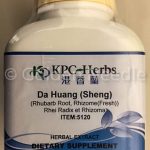

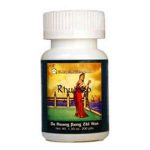
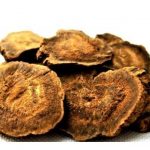
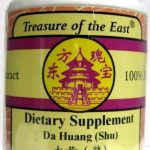
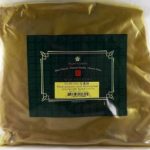
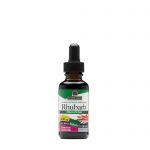
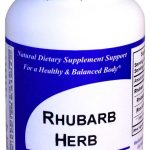
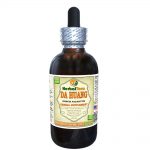
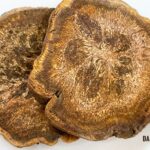
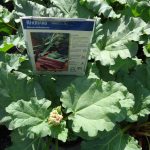
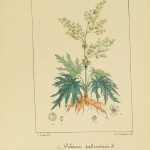
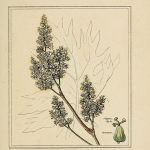
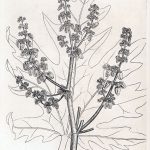
0 Comments